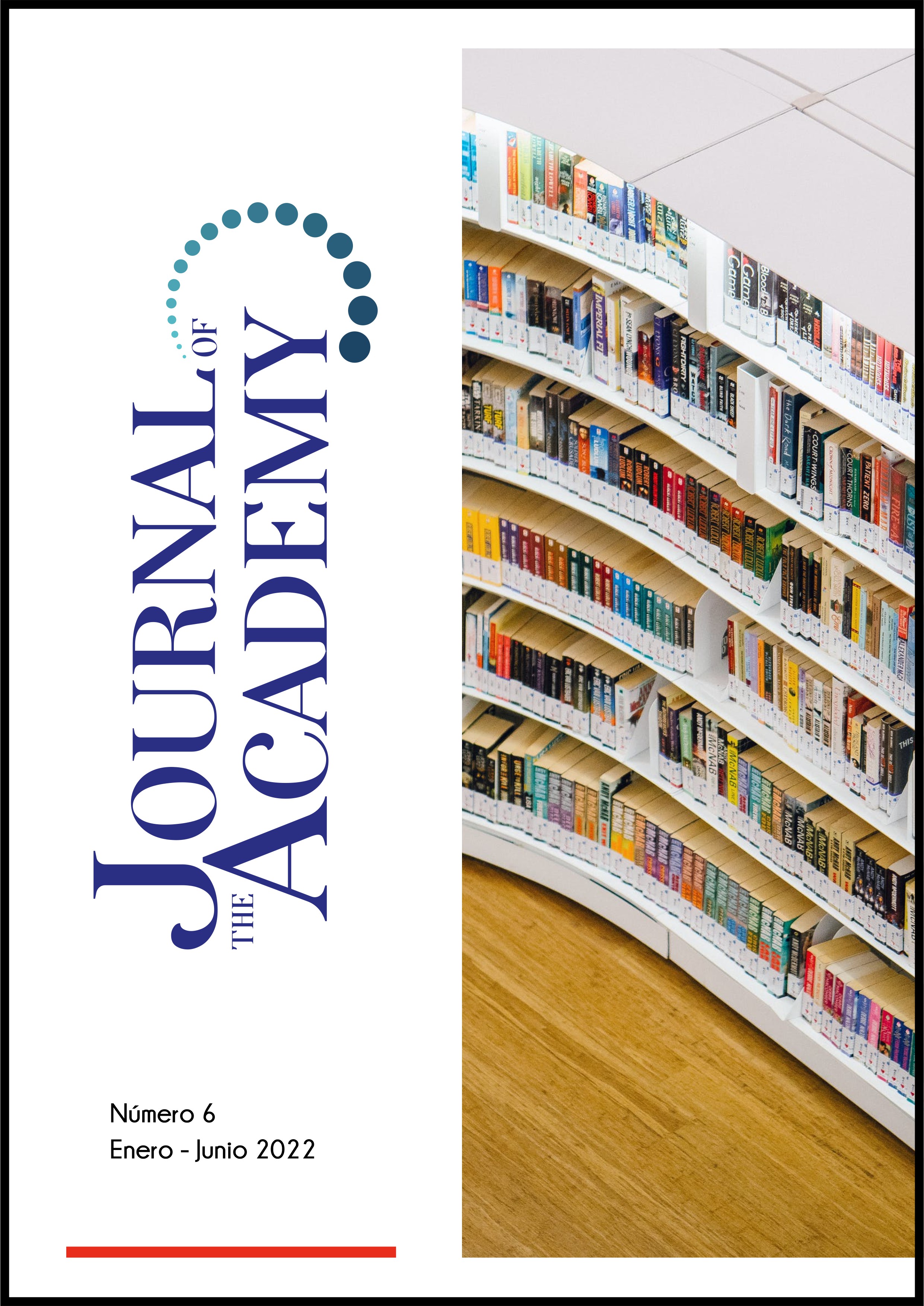Design and validation of an instrument to measure intercultural integration in international business
DOI:
https://doi.org/10.47058/joa6.6Keywords:
Validation methodology, measurement instrument, international business, cultural integration, intercultural communicationAbstract
The nature of culture shock experiences is described as the problematic reactions of individuals who are exposed to situations that are unfamiliar or very different from their own cultural context. Culture shock is a critical situation within the international business integration process, since the frustration generated by different perceptions lead to tensions in interpersonal relationships. The purpose of this article is to describe the process of design, development and validation of a new instrument for measuring cultural integration in international business adapted from the studies of Hall (1976), Hofstede (2001), and Cushner (1986). Five phases are included in the instrument design and development process. Quantitative verification method was used to measure the reliability and validity of the variables developed in the survey. The sample included twenty managers of Spanish nationality working in Spanish companies established in Mexico. Some of the most important findings were the identification of the main challenges posed by the creation or adaptation of a measurement instrument in the intercultural context, such as the use of language when creating the items and the bias that the choice of a measurement scale may cause without an intermediate option.
Downloads
References
Arafat, S., Chowdhury, H., Qusar, M., & Hafez, M. (2016). Cross Cultural Adaptation and Psychometric Validation of Research Instruments: A Methodological Review. Journal of Behavioral Health, 5(3), 129. https://doi.org/10.5455/jbh.20160615121755
Berk, L. (2009). Desarrollo del nin?o y el adolescente. Prentice-Hall.
Chaney, L. & Martin, J. (2014). Intercultural Business Communication. Pearson New.
Creswell, J.W. (2014) Research design: Qualitative, quantitative, and mixed methods approaches (pp. 246-247). (4th ed.). Sage Publications.
Cushner, K. (1986). The Inventory of Cross-cultural Sensitivity. Human Resource Management in Action: Skill Building Experiences (5th ed.). West Pub.
Cushner, K. (1999). Human diversity in action. McGraw-Hill.
Cushner, K. (2003). Human Diversity in Action: Developing Multicultural Competencies for the Classroom (3rd ed.). McGraw-Hill.
Cushner, K. & Brislin, R. (1996) Intercultural Interactions (Cross Cultural Research and Methodology) (p. 2). SAGE Publications. Edición de Kindle.
Cushner, K. & Trifonovitch, G. (1989). Understanding Misunderstanding: Barriers to Dealing with Diversity. Social Education, 53(5), 318-321.
Denison, D., Adkins, B., & Guidroz, A. (2011). Managing cultural integration in cross-border mergers and acquisitions. Advances In Global Leadership, (6), 95-115. https://doi.org/10.1108/s1535-1203(2011)0000006008
ICEX España Exportación e Inversiones. (2018). Directorio de empresas españolas establecidas en México. Estudios de mercados y otros documentos de comercio exterior. https://www.icex.es/icex/es/navegacion-principal/todos-nuestros-serviciocamescos/informacion-de-mercados/estudios-de-mercados-y-otros-documentos-de-comercio-exterior/4638650.html
Fantini, A. (2007). Exploring and Assessing Intercultural Competence. Washington University Open Scholarship. <https://openscholarship.wustl.edu/csd_research/816/> [Accessed 4 October 2021].
Hall, E. (1976). Beyond Culture (1st ed.). Anchor Press.
Haros-Pérez, J. (2020). Elementos de diversidad cultural que influyen en la comunicación intercultural en los negocios internacionales de España con México. [Tesis doctoral, Universidad Autónoma de Nuevo León]. Repositorio académico digital. http://eprints.uanl.mx/19575/
Hernández, R., Fernández, C. y Baptista, M. (2014). Metodología de la investigación (6ta edición). McGrawHill
Hofstede, G. (2001). Culture's consequences: Comparing Values, Behaviors, Institutions, and Organizations Across Nations (2nd ed.). Sage.
Hofstede Insights (2021). Country comparison. The Hofstede Insights. https://www.hofstede-insights.com/product/compare-countries/
Pastor, Á. (2019). México: Un socio estratégico para España. Presentación, Cámara de Comercio Española en Nuevo León.
Pimiento, D., Jaramillo, M., Campoverde, E., & Pinduisaca, M. (2020). Análisis de los factores biopsicosocial que inciden en los pacientes diagnosticados con leucemia en la etapa infantil. Journal of the Academy, (2), 20-32. https://doi.org/10.47058/joa2.3
Kei, S., Yazdanifard, R., & Shum, S. (2015). The Significance of Intercultural Communication for Businesses and the Obstacles that Managers should Overcome in Achieving Effective Intercultural Communication. Global Journal of Management and Business Research, 15.
Lloret-Segura, S., Ferreres-Traver, A., Hernández-Baeza, A. & Tomás-Marco, I. (2014). El análisis factorial exploratorio de los ítems: una guía práctica, revisada y actualizada. Anales de Psicología, 30(3), 1151-1169. https://doi.org/10.6018/analesps.30.3.199361
Mahon, J. & Cushner K. (2014) Revising and updating the inventory of cross-cultural sensitivity, Intercultural Education, 25(6), 484-496. https://doi.org/10.1080/14675986.2014.990232
Miaja, M., Romero, R., Ibáñez, E., Soriano, J., & García-Conde, A. (2016). Propiedades psicométricas del cuestionario de afrontamiento al estrés para pacientes oncológicos (CAEPO). Psicooncología, 13(2-3), 271-284. https://doi.org/10.5209/PSIC.54436
Nguyen-Phuong-Mai, M. (2020). Fear-Free Cross-Cultural Communication: Toward a More Balanced Approach with Insight from Neuroscience. Frontiers in Communication, Organizational Psychology, 5. https://doi.org/10.3389/fcomm.2020.00014
Sobrino, R. (2018). Las variedades de español según los hispanohablantes: corrección, incorrección y agrado lingüísticos. Cuadernos de Lingüística de El Colegio de México, 5(2), 79-119. https://doi.org/10.24201/clecm.v5i2.115
Sperber, A. (2004). Translation and validation of study instruments for cross-cultural research. Gastroenterology, 126, S124-S128. https://doi.org/10.1053/j.gastro.2003.10.016
Schwartz, S., Unger, J., Zamboanga, B., & Szapocznik, J. (2010). Rethinking the concept of acculturation: Implications for theory and research. American Psychologist, 65(4), 237-251. https://doi.org/10.1037/a0019330
Szkudlarek, B., Osland, J., Nardon, L., & Zander, L. (2020). Communication and culture in international business – Moving the field forward. Journal Of World Business, 55(6), 101126. https://doi.org/10.1016/j.jwb.2020.101126
Taras, V., Rowney, J., & Steel, P. (2013). Work-related acculturation: change in individual work-related cultural values following immigration. The International Journal Of Human Resource Management, 24(1), 130-151. https://doi.org/10.1080/09585192.2012.672446
Vijaygopal, R., & Dibb, S. (2012). Exploring the role of acculturation in brand choice: A new perspective for targeting Indians living in the United Kingdom. Journal of Targeting, Measurement, and Analysis for Marketing, 20(1), 47-56. https://doi.org/10.1057/jt.2012.4
Washington, M. C., Okoro, E. A., & Thomas, O. (2012). Intercultural Communication In Global Business: An Analysis Of Benefits And Challenges. International Business & Economics Research Journal (IBER), 11(2), 217-222. https://doi.org/10.19030/iber.v11i2.6776
Watkins, M. W. (2018). Exploratory Factor Analysis: A Guide to Best Practice. Journal of Black Psychology, 44(3), 219–246. https://doi.org/10.1177/0095798418771807
Yeke, S., & Semerciöz, F. (2016). Relationships between Personality Traits, Cultural Intelligence and Intercultural Communication Competence. Procedia - Social and Behavioral Sciences, 235, 313–319. https://doi.org/10.1016/j.sbspro.2016.11.036
Downloads
Published
Issue
Section
License
Copyright (c) 2022 Janelly Mitsué Haros-Pérez, Verónica Morales-Towns, Carlos Alejandro García-Zúñiga, Gabriela Aracely Mata-Sánchez

This work is licensed under a Creative Commons Attribution-NonCommercial-ShareAlike 4.0 International License.



